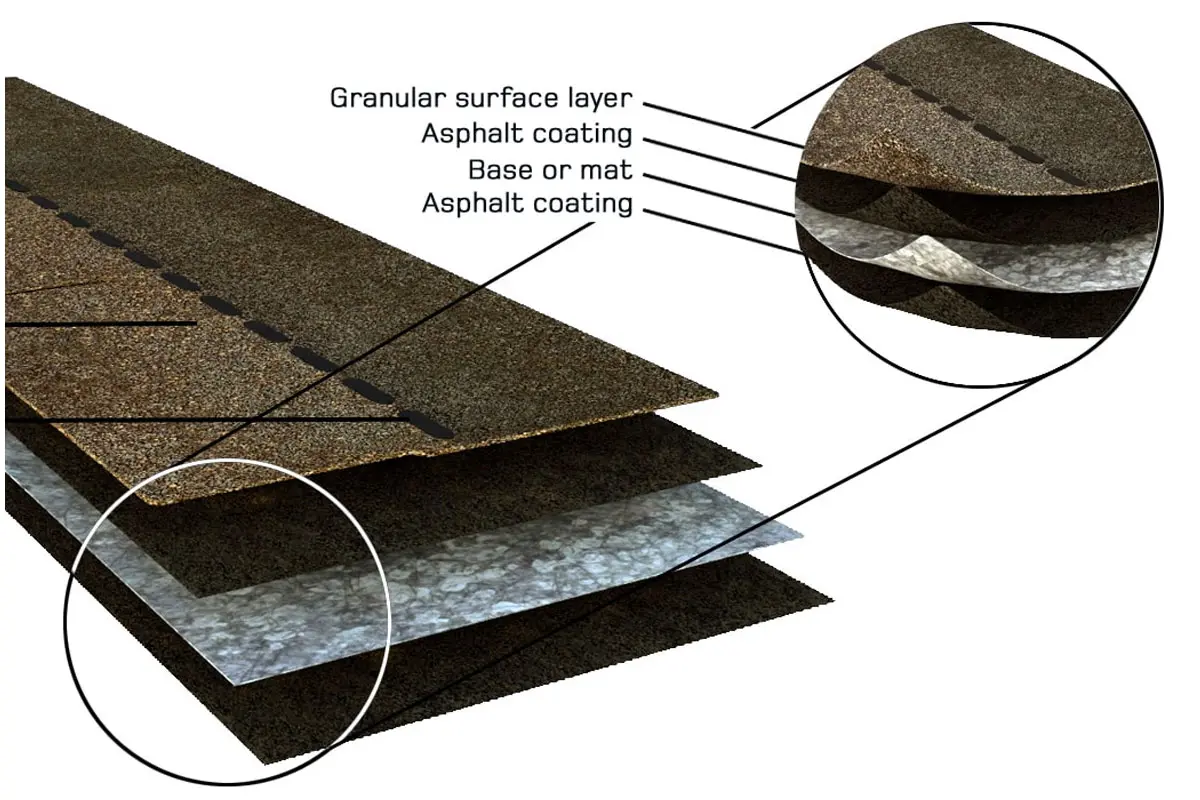
Types of Asphalt Shingles
An asphalt shingle is a type of roof shingle that uses asphalt for waterproofing. It is one of the most widely used roofing covers in North America because it has a relatively inexpensive up-front cost and is fairly simple to install.
ASPHALT SHINGLES VARIETIES
Two types of base materials are used to make asphalt shingles, organic and fibreglass. Both are made in a similar manner, with an asphalt-saturated base covered on one or both sides with asphalt or modified-asphalt (See above), the exposed surface impregnated with granules.
The fibreglass shingle is composed of a fibreglass mat that requires less asphalt to give the shingles their durability and strength. The result is a lighter weight and thinner roofing material. Fibreglass shingles also have a higher fire rating than organic varieties and generally carry a longer warranty. Fibreglass have become the roofing material of choice for most homeowners and contractors today.
The traditional organic mat-based shingles are made from a recycled layer of felt paper. With 40 percent more asphalt than their fibreglass counterparts, the traditional organic mat-based shingles are heavier, thicker and more costly. Their organic core leaves them more prone to fire damage, resulting in a maximum class “B” FM fire rating. They are also more absorbent and can warp over time. The additional asphalt content also makes them less environmentally friendly. Organic shingles didn’t perform up to expectations, so most manufacturers stopped making them in 2008.
SBS (STYRENE-BUTADIENE-STYRENE) MODIFIED ASPHALTS
SBS modified asphalt strengthens roofing shingles. You’ll find this in upgrade shingles and premium shingles. Better weathering and impact resistance are the two primary benefits of using SBS in asphalt roofing shingles. The improved granule adhesion reflects the sun’s UV rays and keeps the shingles from rapid weathering. The gained flexibility from SBS makes the shingle impact and wind resistant.
GRANULES
The part of the asphalt shingle that will be exposed to the elements is coated with mineral granules that are available in a wide range of colours. The primary function of those coloured granules is to protect the asphalt from aging due to solar rays. Granules can be given a single colour to produce a solid-colour shingle or a blend of coloured granules for a more nuanced look. Manufacturers will coat their granules with a special formula that can stabilize the colour better, make a shingle Algae resistant, or provide even better UV resistance.
SEALANT STRIPS
Continuous or intermittent lines of raw asphalt are applied to the top part of each shingle that will be covered by the next layer installed. The sealant strip bonds the shingles together once they heat up in sun and warmth.

Architectural Shingles
Also known as composite, laminate or dimensional shingles. These shingles contain no cutouts, but their lower portions are laminated with an additional asphalt layer. This creates the contoured, dimensional look that gives them their name.

Designer Shingles
A high-end premium shingle with a higher profile creates an enhanced dimensional texture for a more pronounced design. Some insurance companies offer a home owner’s discount with premium shingles. Something worth investigating!